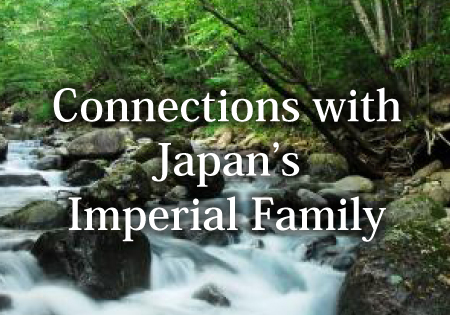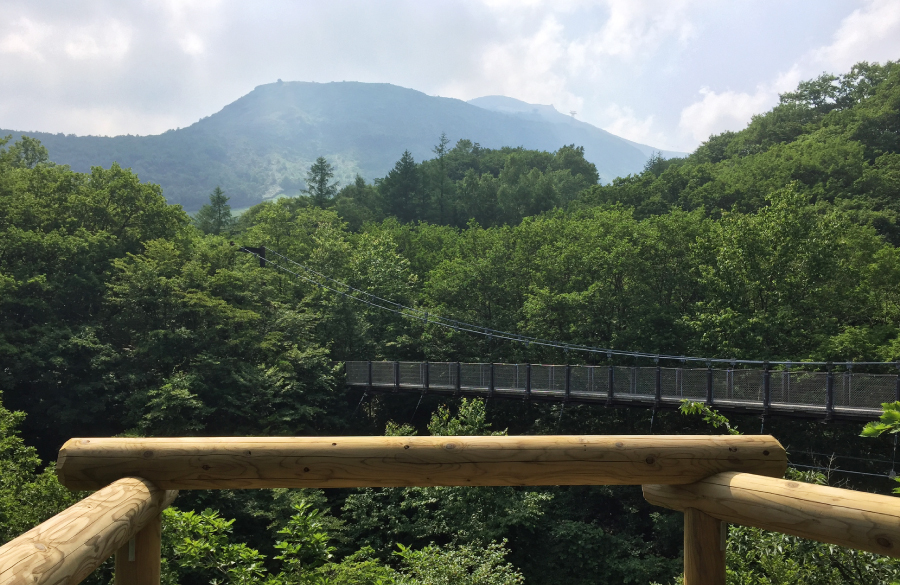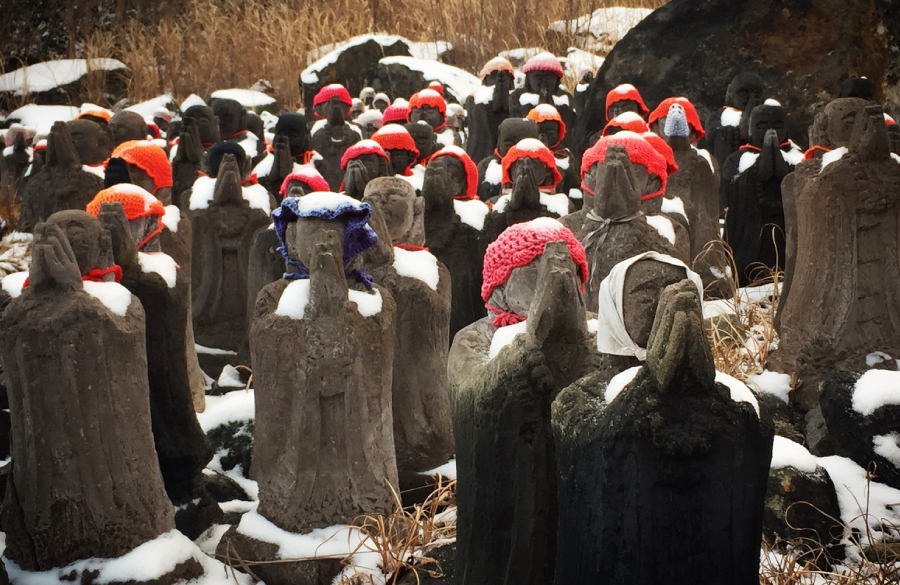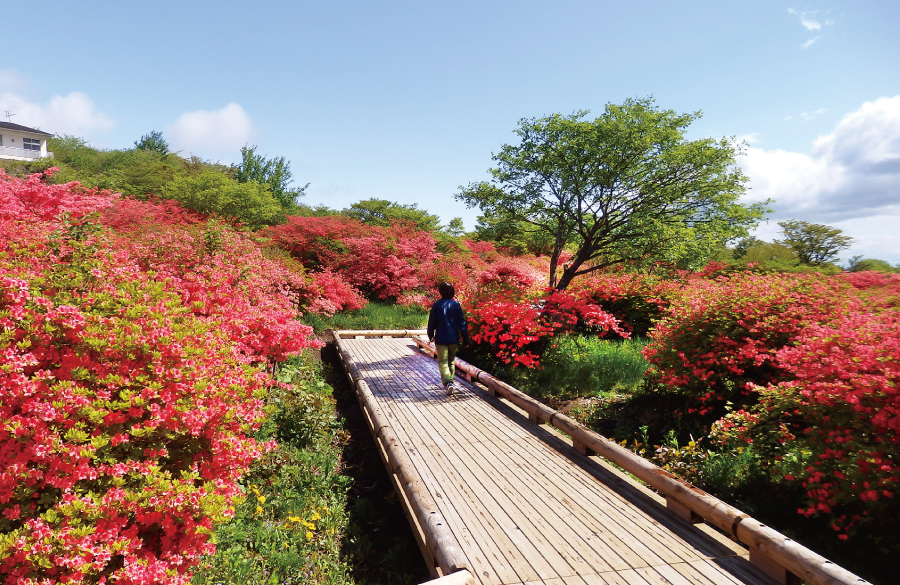Nikko National Park: The Nasu-Kashi Area
The Nasu-Kashi area of Nikko National Park is centered on the Nasu mountain range
and straddles the border of Tochigi and Fukushima Prefectures. Winter here is colder
than it is in Tokyo, with average January temperatures several degrees below freezing
and snow accumulation averaging 20 to 30 centimeters in a typical year. Summer
temperatures are also relatively cool, averaging in the low twenties (Celsius).
The Nasu mountain range is a volcanic group centered on the Five Peaks of Nasu
(sometimes collectively called Mt. Nasu): Mt. Chausu (1,915 m), Mt. Asahi (1,896
m), Mt. Sanbonyari (1,917 m), Mt. Minamigassan (1,776 m), and Mt. Kuro-oya (1,589
m). The peaks were formed by volcanic activity that began around 500,000 years ago.
Mt. Chausu, the range’s only remaining active volcano, erupted violently from 1408
to 1410, killing more than 180 people and creating the dome of hardened andesite that
forms its current summit. Mt. Chausu’s last eruption was in 1881, but numerous hot
springs around the mountain indicate ongoing volcanic activity. Fumaroles (volcanic
vents) near the peak and base of Mt. Chausu constantly emit sulfurous gas.
The unique environment of the Nasu mountain range gives rise to a highly diverse
ecosystem. Firstly, local wildlife has had to adjust to the volcanic conditions over the
centuries. Secondly, the area is the boundary of the Pacific Ocean and Sea of Japan
ecological zones. Thirdly, the broad highland area south of Mt. Chausu, called
Nasukōgen, is home to many high-altitude species, many of which are classified as
Vulnerable (VU) or Near Threatened (NT) on the Ministry of Environment’s lists of
endangered species.
The Nasukogen Visitor Center provides information on the Nasu-Kashi area and
features exhibits on its history, nature, and outdoor activities. The staff can also advise
visitors on the area’s many hiking trails.
 Highlighting the beautiful seasonal charms of the Nasu Mountain Range, with suggestions on activities to enjoy in the area
Highlighting the beautiful seasonal charms of the Nasu Mountain Range, with suggestions on activities to enjoy in the area
 Featuring the local culture and hot springs with over 1,400 years of history, as well as the legend of the Sesshō-seki, or “Killing Stone”
Featuring the local culture and hot springs with over 1,400 years of history, as well as the legend of the Sesshō-seki, or “Killing Stone”
 Nasukogen enjoys a deep relationship with the Imperial Family, and is home to an Imperial Villa that serves as their summer retreat.
Nasukogen enjoys a deep relationship with the Imperial Family, and is home to an Imperial Villa that serves as their summer retreat.



